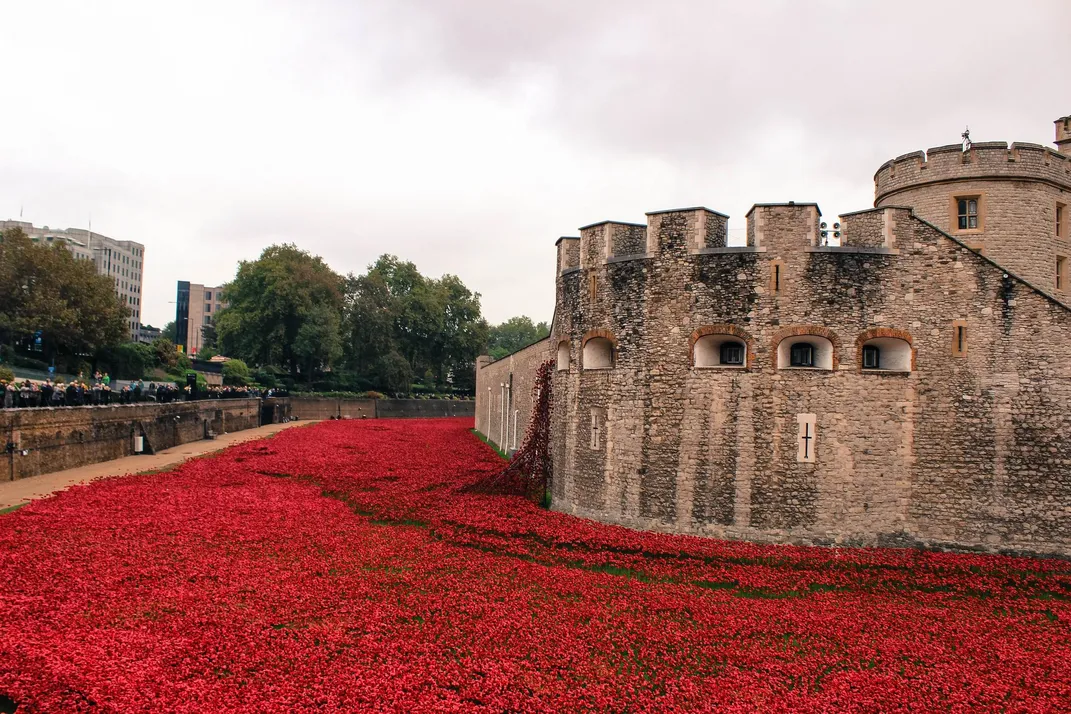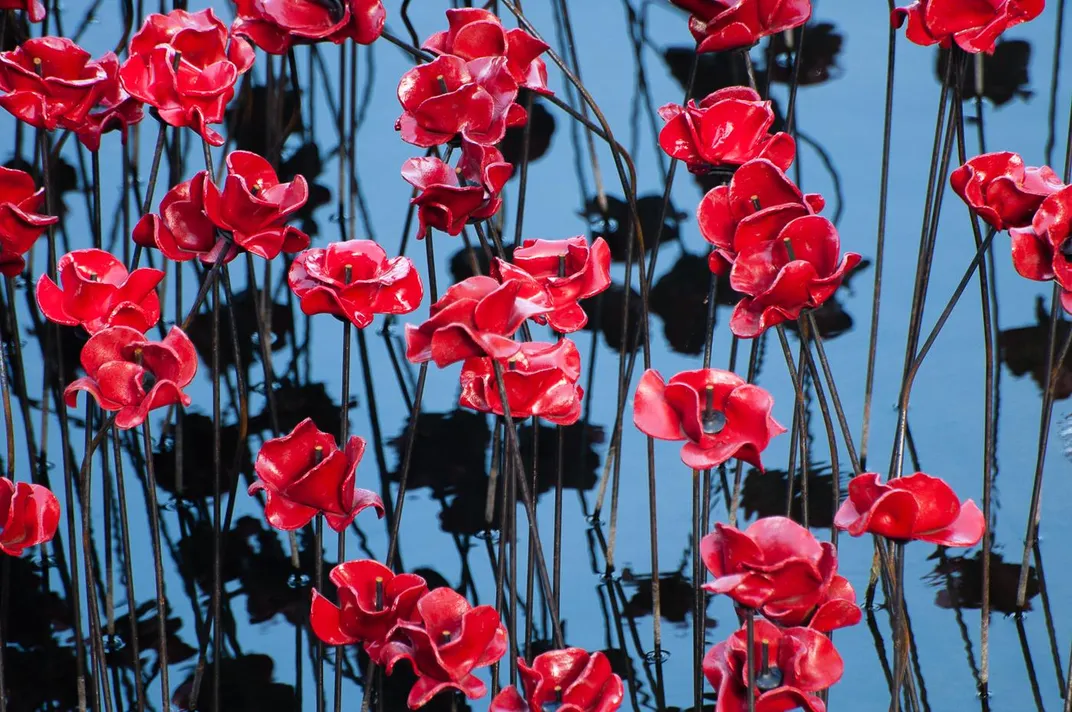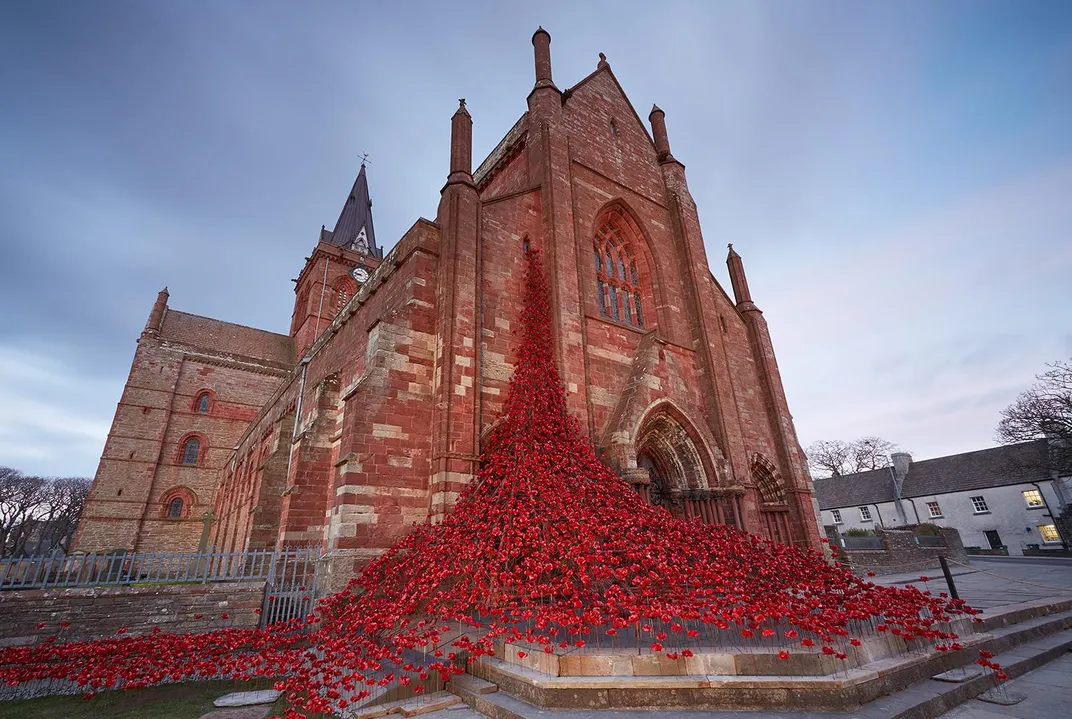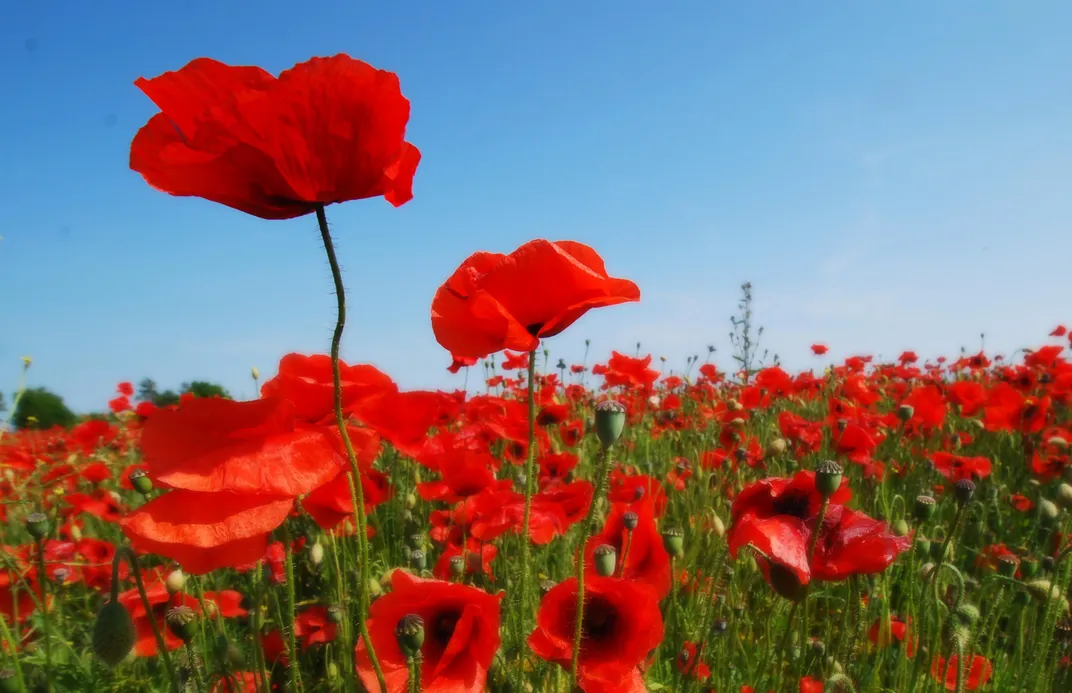How the Poppy Came to Symbolize World War I
Red blooms help the world commemorate a bloody war
A century ago, “the war to end all wars” raged throughout Europe—a war that racked up nearly 38 million casualties, including upwards of 8.5 million deaths. More than 900,000 of the dead were British soldiers, and since 2014, 100 years after the war began, thousands of people in the U.K. have seen a huge field of red ceramic poppies, the symbol of war remembrance throughout the Commonwealth, pop up around well-known landmarks like the Tower of London.
The installation is called Poppies: Weeping Window, and it’s now on view in Wales at the Caernarfon Castle. The evocative work began touring the U.K. last July. Created by artist Paul Cummins and designer Tom Piper, the display started out as part of an exhibition at the Tower of London and grew in size and scale as huge numbers of visitors—an estimated five million in all—came to see the bloody beauty of hundreds of thousands of red poppies pouring out of a window, each honoring a British or Colonial serviceman who died during the war. Since then, the exhibition, which was initially planned to be temporary, has been preserved and is touring the rest of the nation in two parts, Weeping Window and Wave. As the BBC reports, the exhibition’s current stop has already drawn thousands of visitors.
But why poppies? The answer is half biology, half history. The common or “corn” poppy, also known as Papaver rhoeas, grows throughout the United States, Asia, Africa and Europe and is native to the Mediterranean region. Its seeds need light to grow, so when they're buried in the earth, they can lay dormant for 80 years or even longer by some accounts, without blooming. Once soil is disturbed and the seeds come to light, poppies nobody knew existed can then bloom.
During World War I, this beautiful phenomenon took place in a Europe decimated by the first truly modern war. In Belgium, which was home to part of the Western Front in its Flanders provinces, the soil was torn up by miles of trenches and pocked by bombs and artillery fire. The Battles of Ypres, which took part in a portion of Flanders known as Flanders Fields, were particularly deadly and took a toll on the physical environment, too. Hundreds of thousands of soldiers, many of them British, breathed their last on soil laid bare and churned up by the mechanics of war.
After the Second Battle of Ypres, a Canadian doctor named John McCrae noticed red poppies growing near one of Flanders' Fields' mass cemeteries. He wrote a poem, “In Flanders Fields,” in 1915, which was eventually published in Britain. “In Flanders fields the poppies blow,” wrote McCrae, “Between the crosses, row on row.” It went on to become the war’s most popular and most recognized poem in the United States and Great Britain.
The poem, which muses on the existence of poppies in a cemetery and encourages people to take up the torch in honor of their fallen countrymen, became a powerful recruiting tool for the Allies. (Lines from the poem and red poppies even appeared on the back of the Canadian $10 bill for a time.) Red poppies began to appear not just on posters encouraging people to sign up for the army or to buy war bonds, but in ceremonies honoring the war dead.
As the BBC reports, an American woman named Moina Michael read McCrae’s poem and vowed to wear a red poppy every day until she died. She began to distribute silk poppies and her work led women from Allied nations to sell artificial poppies to raise funds for war victims after the war. A symbol had been born—one that persists to this day. Today, people throughout the Commonwealth wear paper poppies on Remembrance Sunday, a day that commemorates the dead of both World War I and World War II. But not everybody prefers poppies: As The Week reports, some people see the symbol as glorifying war and use white poppies to show their objection to war.
Today, poppies still dot the places that were once scarred by World War I. But in the U.K., a larger initiative called 14-18 NOW is working to make sure that the war is not forgotten by commissioning artwork about World War I. Poppies and other exhibitions will pop up around the country until 2018 at sites notable for their connections to the war. But long after the installation has been retired, poppies will persist on the lapels of public figures and ordinary Britons—a blooming symbol of a bloody conflict that changed the world forever.
/https://tf-cmsv2-smithsonianmag-media.s3.amazonaws.com/accounts/headshot/erin.png)





/https://tf-cmsv2-smithsonianmag-media.s3.amazonaws.com/accounts/headshot/erin.png)